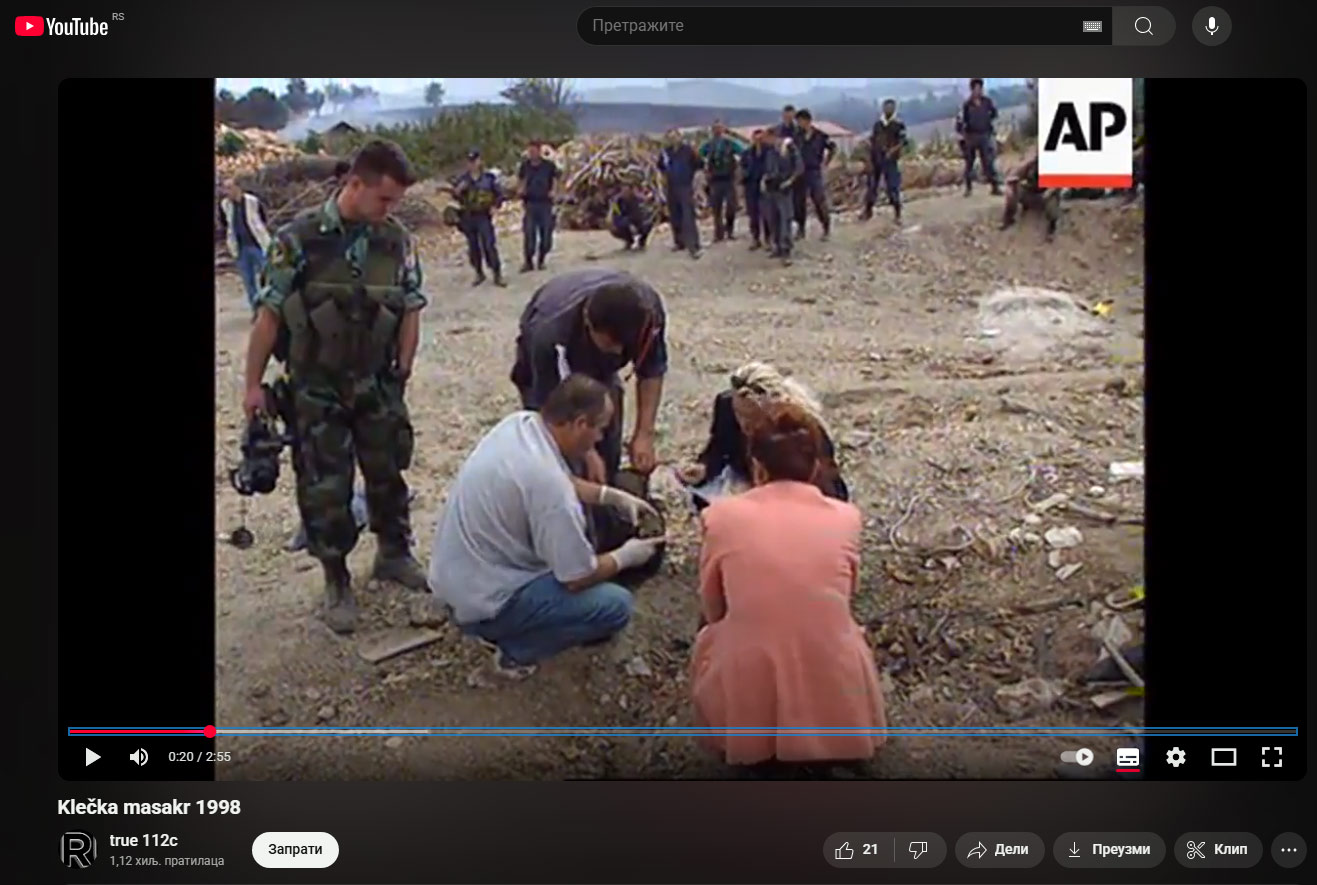Kosovo and Metohija
Косово и Метохија — скраћено КиМ, званично Аутономна Покрајина Косово и Метохија — АПКиМ, понекад кратко Косово, или Космет (од Косово и Метохија), је аутономна покрајина у саставу Србије. Налази се у средишту Балканског полуострва, а чине је области Косово и Метохија. Граничи се на југоистоку са Северном Македонијом, на југозападу са Албанијом и на западу са Црном Гором. Према попису из 2024. било је 1.586.659 становника. Службени језици су српски и албански, а седиште администрације се налази у Приштини.
- Details
- Written by: SH
- Parent Category: Kosovo and Metohija
- Category: Gjakova
- Hits: 74
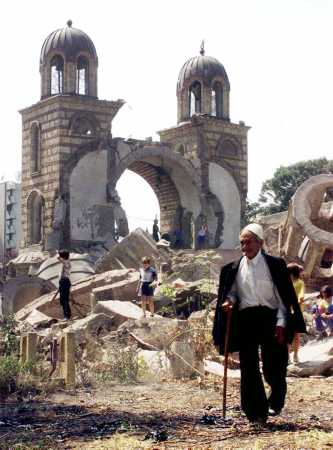 The old Church of the Holy Trinity in the city of Đakovica was intended to be a mausoleum, a memorial ossuary for thousands of Serbian children who died in Albania, as well as for the earthly remains of those who perished, were killed, or froze during the wars of 1912–1918.
The old Church of the Holy Trinity in the city of Đakovica was intended to be a mausoleum, a memorial ossuary for thousands of Serbian children who died in Albania, as well as for the earthly remains of those who perished, were killed, or froze during the wars of 1912–1918.
This church was completed in 1940, but the April War of 1941 prevented its final completion and consecration. It was destroyed by Serbian godless communists in 1949 (blown up) on Savindan (January 27).
Its destruction was one of the most drastic examples of political antitheism by the new authorities established immediately after the end of World War II (as noted in the letter from the Bishop of Raška and Prizren, Mr. Vladimir, to the Serbian Patriarch Mr. Vikentije, “Destruction of the Church in Đakovica,” dated June 28, 1951, in: Endowments of Kosovo, pp. 803–804).
- Details
- Written by: УМ
- Parent Category: Kosovo and Metohija
- Category: Lipljan
- Hits: 46
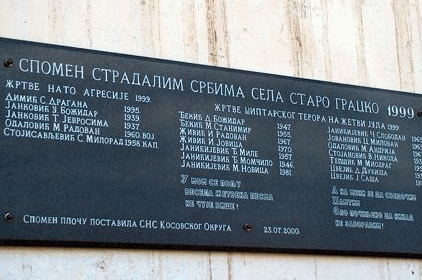
On July 23, 1999, in the village of Staro Gracko near Lipljan, fourteen Serbs were brutally murdered in a field. A burst of gunfire, fired at close range, cut down fourteen men, and some families from this village lost all of their male members in a matter of moments.
The Kosovo authorities, UNMIK, EULEX, and KFOR failed to find the killers of the Serbian harvesters from Staro Gracko even after fourteen years.
The youngest of the murdered was only seventeen years old.
The victims were:
- Details
- Written by: SH
- Parent Category: Kosovo and Metohija
- Category: Lipljan
- Hits: 63
Village of Klečka, August 27, 1998.
Serbian police discovered a cremation furnace in a lime factory, used for burning killed Serbs. In Klečka, there was also a base of the terrorist Kosovo Liberation Army (KLA), with a training center and ammunition storage. Captured KLA terrorists from Mališevo, Lijan, and Bekim Mazreku stated in their testimonies that during July 1998, 22 Serbian civilians were captured, killed, and burned in Klečka. The civilians were taken before a firing squad and executed, while the cremation furnace was used in the hope that the high temperature would destroy evidence. However, several partially burned bodies remained in the furnace.
In Klečka, the bodies of 22 Serbian civilians were found.
At the end of August, during military-police operations in the area of Mališevo, the “rebel stronghold” of the Kosovo Liberation Army (KLA) in the middle of Kosovo and Metohija, the burned remains of 22 people were discovered in the village of Klečka. The very next day, August 28, the spokesperson of the Ministry of Internal Affairs (MUP) of Serbia informed a large number of journalists, who were granted access to the village lime factory where the remains were found, that these were civilians executed by Albanian extremists.
Read more: Klečka – Crematorium for Serbs (Lipjan Municipality)
- Details
- Written by: SH
- Parent Category: Kosovo and Metohija
- Category: Peć
- Hits: 75
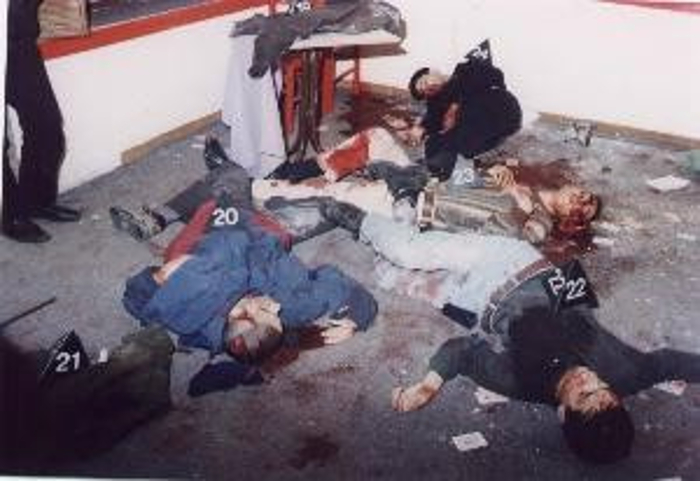 Svetislav, Zoran, Dragan, Vukota, and two Ivans look innocently from the obituary; Peć has turned into a city of sorrow, while the hypocritical world politics still try to mask the monsters ready to do anything—even flood Kosovo and Metohija with blood—under false names.
Svetislav, Zoran, Dragan, Vukota, and two Ivans look innocently from the obituary; Peć has turned into a city of sorrow, while the hypocritical world politics still try to mask the monsters ready to do anything—even flood Kosovo and Metohija with blood—under false names.
Just one day after the United States and the Security Council vetoed a presidential statement condemning the Albanian terrorists in Kosovo and Metohija, they, emboldened by such support, carried out the most monstrous terrorist act so far—in the "Panda" café in Peć on Monday, December 14, 1998, shortly after 8 PM—killing six Serbian youths, Serbian falcons. Most of them were high school students, and the owner of the café, Mirsad Šabanović, was also wounded.
In the terrorist attack, Ivan Radević (26), Dragan Trifović (18), Vukota Gvozdenović (16), and Ivan Obradović (15) were fatally shot on the spot, while Zoran Stanojević (18) and Svetislav Ristić (18), all from Peć, later died from severe injuries at the Clinical Hospital Center in Priština.
According to eyewitnesses, a car stopped in front of the café, which had 13 people inside at the time. Two terrorists jumped out, dressed in black uniforms with “balaclavas” covering their faces. They immediately opened burst fire at the guests right at the door.
The first bullets hit Ivan Obradović. Not far from him stood his father, who miraculously remained unharmed. However, it cannot be said that Ivan's father escaped the terrorists’ bullets and bursts; a bullet struck his heart, and now he lives wounded because of the death of his son. Then the terrorists fired at the others.
Read more: The murder of six Serbian young men in the “Panda” café in Peć (1998)
- Details
- Written by: SH
- Parent Category: Kosovo and Metohija
- Category: Camps
- Hits: 76
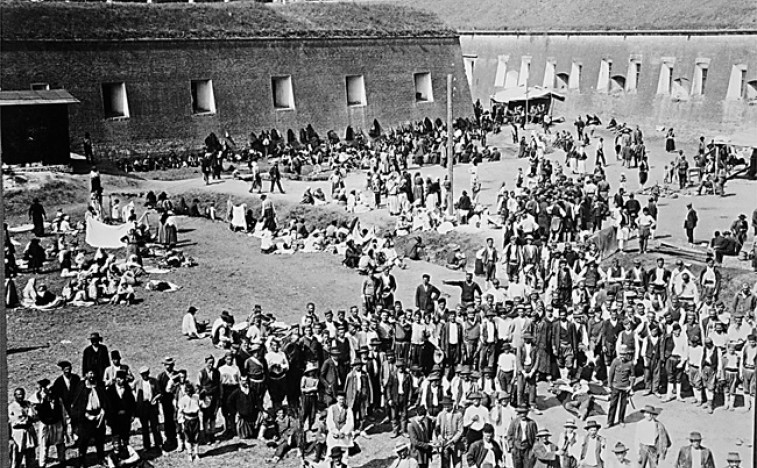
It was a large Austro-Hungarian concentration camp for Serbs, as well as other Slavic peoples, located in the northernmost part of Banat (present-day western Romania).
The camp was established by order of the Viennese court in the summer of 1914, when mostly Serbian civilians were brought in from the territories of Dalmatia, Dubrovnik, Bosnia, Šumadija, Srem, Herzegovina, and Pomoravlje. These arrests of Serbs were carried out by the Šuckori (special military units composed mainly of Bosnian Croats and Muslims).
The Arad Camp was located in the Arad Fortress, which is 215 km from Belgrade and 43 km from Timișoara. The fortress was built in the late 18th century. Several thousand Serbs passed through it, and it is estimated that around 20,000 prisoners were interned there in total (among them, the brothers of Gavrilo Princip — Jovo and Nikola). Civilians were brought in indiscriminately, regardless of age, gender, or economic status.
The Arad Camp is considered one of the most notorious Austro-Hungarian camps during the First World War.
- Details
- Written by: SH
- Parent Category: Kosovo and Metohija
- Category: Kosovo Field
- Hits: 69
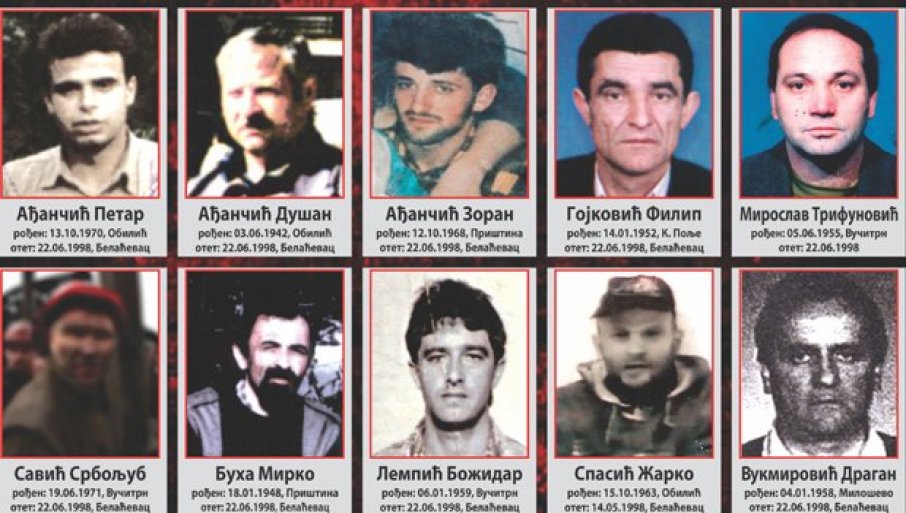
On June 22, 1998, ten miners were kidnapped from the Belaćevac coal mine of the Obilić Thermal Power Plant in Kosovo and Metohija. According to the Association of Kidnapped and Murdered Serbs in Kosovo and Metohija, this was the first organized abduction of Serbian civilians by the criminal KLA (Kosovo Liberation Army)—a full year before the outbreak of armed conflict.
On that day, June 22, 1998, while on their way to work, the following individuals were abducted: Žarko Spasić, brothers Petar and Zoran Ađančić, along with their father Dušan, Filip Gojković, Miroslav Trifunović, Srboljub Savić, Mirko Buha, Božidar Lempić, and Dragan Vukmirović.
Members of the organization—which at the time was even designated as terrorist by the United States—used a truck to block the miners’ access to the coal pit and then took them in the direction of the Ćićevica mountain.
- Details
- Written by: SH
- Parent Category: Kosovo and Metohija
- Category: Orahovac
- Hits: 52
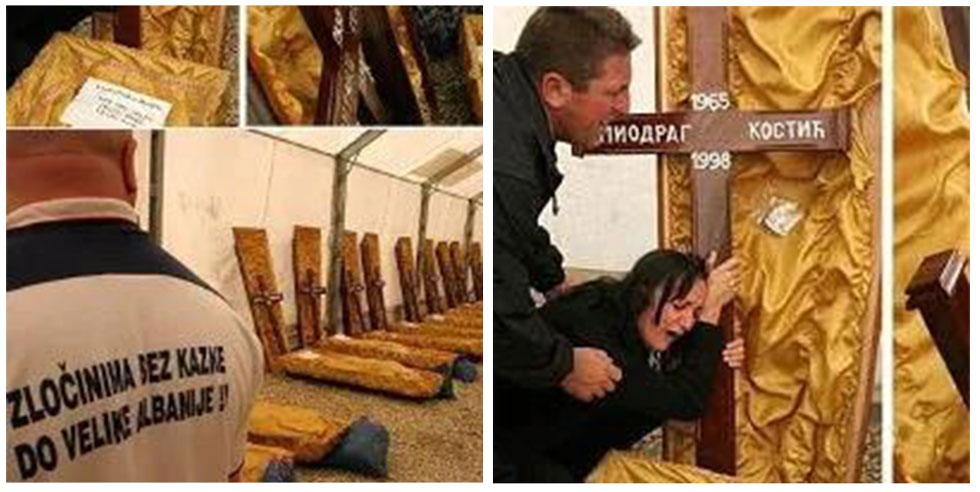 The Kostić family from Retimlje near Orahovac is called the most tragic family in Kosovo. First, Jugoslav Kostić, a night watchman at Orvin, disappeared on July 10, 1998. A week later, after three days of fighting, members of the KLA came down from Mališevo to Orahovac, and on July 18, sometime after midnight, they attacked the Kostić family homes. They first killed 62-year-old farmer Anđelko Kostić on the doorstep. Then all those who were there were captured – including fourteen members of the Kostić family.
The Kostić family from Retimlje near Orahovac is called the most tragic family in Kosovo. First, Jugoslav Kostić, a night watchman at Orvin, disappeared on July 10, 1998. A week later, after three days of fighting, members of the KLA came down from Mališevo to Orahovac, and on July 18, sometime after midnight, they attacked the Kostić family homes. They first killed 62-year-old farmer Anđelko Kostić on the doorstep. Then all those who were there were captured – including fourteen members of the Kostić family.
One of Anđelko’s sons, Živko, was given two hours to bury his dead father. A coffin was made from two boards and a blanket, and two or three people, under the escort of uniformed KLA members, were taken to the cemetery to dig a grave. The Serbs were then forced to hold the burial, which was conducted without a priest and without other Serbian customs. Afterward, they were returned to the village center and lined up. The women said goodbye to their sons and husbands. The men were loaded onto a truck and taken toward the village of Opteruša. They were never seen again.
Pavle Kostić, son of the murdered Anđelko, who told us this story, was not present during the crime. He was trapped in the village of Zočište because, after returning from work on July 17, he could not get through to his village due to the fighting. Since Retimlje is only three kilometers from Zočište, he listened to the fighting all night. The next day, his mother told him what had happened.
- Details
- Written by: SH
- Parent Category: Kosovo and Metohija
- Category: Gnjilane
- Hits: 60
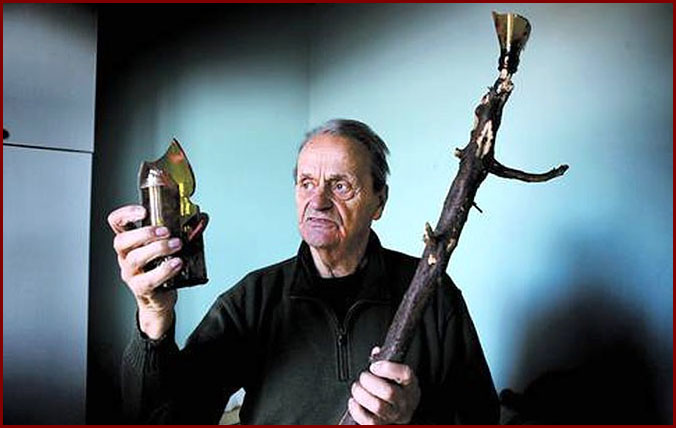
Albanian terrorists impaled him on a stake on May 1, 1985. The truth was hidden for 15 years. Glas is the first to publish the complete “sequence of events” about Đorđe Martinović. When he became known to the world public, the first report was published on May 4, 1985, in Politika. It read: “An employee of the JNA Home in Gnjilane, Đorđe Martinović, was impaled on a stake on May 1 on his field, Jaruga, two kilometers from Gnjilane. This atrocity was committed by Albanian terrorists.”
That news broke like a bolt from the blue in the then-tense reality of Kosovo and Yugoslavia. Today it can freely be said that it was the initial spark for many later events in Kosovo and Metohija and throughout Yugoslavia—and, in a way, even for the famous Eighth Session a year and a half later.
On the occasion of the news of Đorđe Martinović’s death, the editorial board of Glasnik is publishing details that have never been revealed before—details that largely shed light on the truth that had until now been hidden from the public.
Subcategories
Gjakova Article Count: 1
Đakovica is an urban settlement and the seat of the municipality of the same name in Serbia, located in the southwestern part of Kosovo and Metohija and belonging to the Peć Administrative District. According to the 2024 census, there were 41,809 inhabitants. It is located in the west of Metohija, between Peć and Prizren, while it is about 100 km from the Adriatic Sea coast.
Lipljan Article Count: 2
Lipljan is an urban settlement and the administrative center of the municipality of the same name in Serbia, located in the central part of Kosovo and Metohija, and it belongs to the Kosovo administrative district. According to the 2024 census, it had 13,092 inhabitants. It is situated 16 km south of Priština, at the confluence of the Janjevka River with the Sitnica River, and lies on the main route connecting Priština with Skopje and Prizren.
Lipljan in Kosovo and Metohija a site of suffering for Serbs
Peć Article Count: 1
Peć is an urban settlement and the administrative center of the municipality of the same name in Serbia, located in the western part of Kosovo and Metohija. It belongs to the Peć administrative district. According to the 2024 census, it had 41,171 inhabitants.
The town is situated on the Peć Bistrica River, a tributary of the White Drin, near the Prokletije mountains to the east. The Rugova Gorge, one of the longest and deepest gorges in Europe, is located about three kilometers from the city of Peć.
The city is 250 km north of Tirana, 150 km northwest of Skopje, and 280 km from Podgorica.
In the Middle Ages, the city was the seat of the Serbian Orthodox Church from the 13th century. The Peć Patriarchate Monastery is part of UNESCO's World Heritage site of Medieval Monuments in Kosovo
Camps Article Count: 1
Camps in which Serbs suffered
First world war Article Count: 0
Camps in the First World War where Serbs suffered
Kosovo Field Article Count: 1
The Municipality of Kosovo Polje is a municipality in the Republic of Serbia, located in the Autonomous Province of Kosovo and Metohija, and is part of the Kosovo Administrative District.
The municipality covers an area of 89 km².
This municipality, together with the municipalities of Obilić and Novo Brdo, was established on July 2, 1988, from settlements that were previously part of the then Municipality of Priština (Official Gazette of the SAP of Kosovo, no. 18/88).
Orahovac Article Count: 1
Orahovac is an urban settlement and the administrative center of the municipality of the same name in Serbia, located in the southwestern part of Kosovo and Metohija, and belonging to the Prizren Administrative District. According to the 2024 census, it had a population of 13,642.
The settlement's territory lies within the cadastral municipality of Orahovac, covering an area of 4,894 hectares.
Gnjilane Article Count: 1
Gjilan (Albanian: Gjilan or Gjilani) is an urban settlement and the administrative center of the municipality of the same name in Serbia, located in the southeastern part of Kosovo and Metohija. It is the seat of the Kosovo Pomoravlje administrative district. According to the 2024 census, it had a population of 53,279. Gjilan is situated in the Kosovo Pomoravlje region and is connected to Pristina, Uroševac, Kosovo Kamenica, Preševo, and Bujanovac.
Prizren Article Count: 1
Prizren is an urban settlement and the administrative center of the municipality of the same name in Serbia, located in the southern part of Kosovo and Metohija, and belongs to the Prizren administrative district. According to the 2024 census, it had 76,850 inhabitants. It is one of the most important cities of the medieval Serbian state and cultural heritage of Serbia. The city is situated at the foothills of the Šar Mountains, near the borders with Albania and North Macedonia.
Ribe Article Count: 1
The village of Ribe (Ribe) is a small, remote mountain settlement located in the Mat district in northern Albania, not far from the town of Burrel. This village gained international, and extremely tragic, notoriety after the Kosovo war in 1999, as it was allegedly the site of the so-called "Yellow House."





